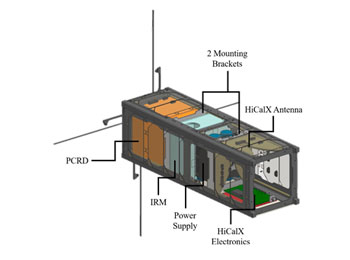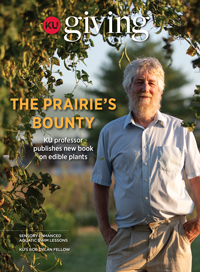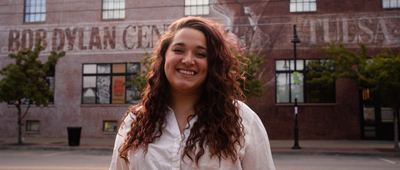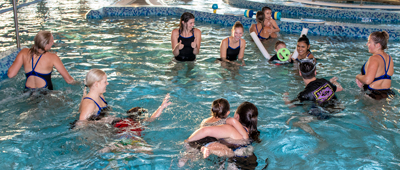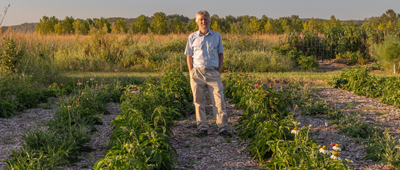KU Giving Magazine
Ready for Liftoff
Valerie Gieler
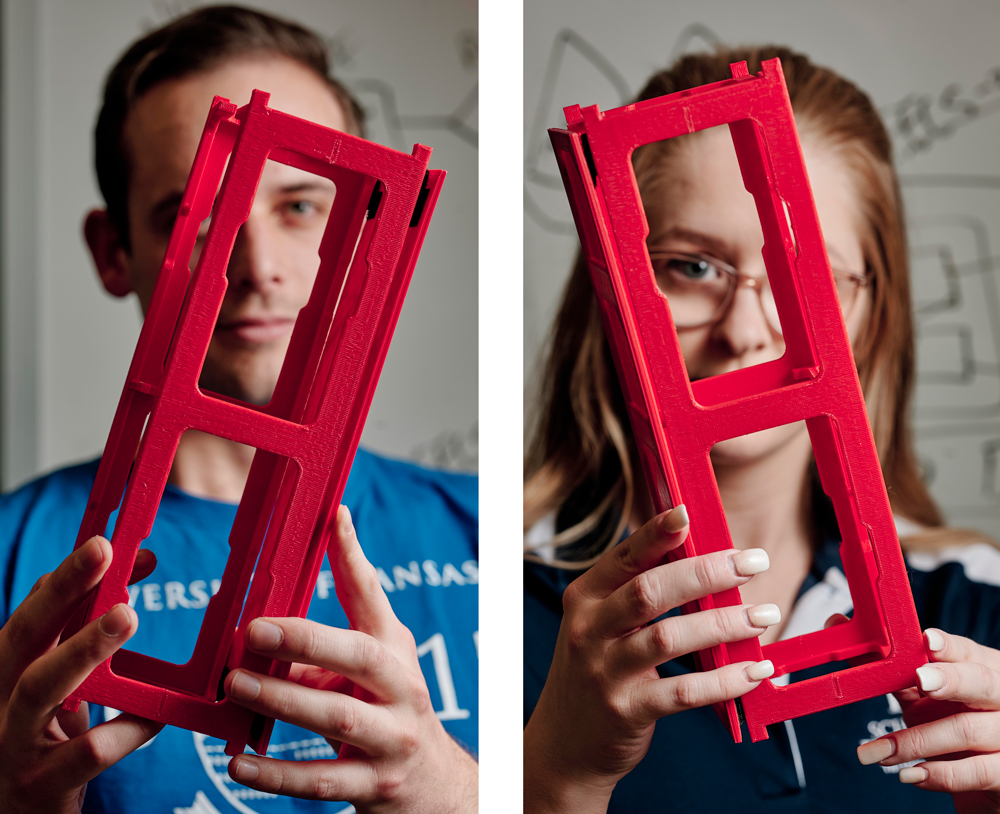
Hill Space Systems Lab boosts KU’s ability to build satellites
KU graduate student Arno Prinsloo will never forget his first time on an airplane. In 2001, his family moved from South Africa to the U.S., and he found his lifelong passion on that trip. Prinsloo was captivated by the plane, so he built a Lego version during the long flight. He vividly remembers asking his dad what he could do with planes as an adult. He has wanted to be an aerospace engineer ever since.
Similarly, graduate student Madison Sargent has looked up at the stars and dreamed about space for as long as she can remember. Sargeant said she would travel to space if the opportunity arises. However, she is happy to contribute to space-based systems and research from the ground.
Prinsloo and Sargent are leading KUbeSat (pronounced “Cube Sat”), the university’s team that is building a small satellite to compete in NASA’s CubeSat Launch Initiative (CSLI). This initiative aims to have every state launch at least one satellite. KUbeSat strives to be the first team in Kansas to successfully launch one. They are working toward a December 2020 launch.
“CubeSats have been around since the 1990s, but companies are just now really experimenting with them,” Prinsloo said. “For me, it’s an excellent opportunity to be on the cutting edge, which is what every engineer wants.”
A place to build
The Hill Space Systems Laboratory in Learned Hall provides a state-of-the-art environment for aerospace engineering students to design and build satellites. It features a 12-by-12-foot clean room where students build the satellites while wearing protective clothing. The lab has a separate computer room where students design and test their creations.
The new lab was made possible by a gift from KU alumnus and longtime School of Engineering supporter Ron Hill, and his wife, the late Sue Hill. Hill is the CEO of HEMCO Corporation in Independence, Mo., which provided a matching gift.
“My KU education provided me with the fundamentals to start my company and build my career,” Hill said. “Our support to the Aerospace Engineering Department of a HEMCO clean room system enabled the department to bring on an additional instructor and is allowing students to accomplish what they had not been able to do. It gives me joy to see the fruits of our support.”
KU satellite history
KU is not new to building satellites.
A previous KU team built a satellite in 2006 that was launched on a Russian rocket. Unfortunately, the launch failed on the way to orbit.
A phone call with KU alumnus Marco Villa inspired Sargent to restart KU’s satellite program and apply to NASA’s CLSI.
“Hands-on experience is invaluable for students who want to go into this industry,” Sargent said. “I started this project to give students an opportunity to gain technical knowledge and systems engineering experience and learn how it all works together.”
Villa was involved in the first launch attempt as a KU student and wanted to support a new effort by students. He is now the chief operating officer of Tyvak Nano-Satellite Systems and has been a source of inspiration for the KUbeSat team.
Orbital plans
The Hill Space Systems Laboratory is part of KU’s effort to expand its prestigious aerospace engineering program to include more opportunities for students interested in space exploration. The goal is to eventually have student teams working on multiple satellites at the same time and to launch one every other year.
“The new lab provides a home for our small satellite initiative,” said Mark Ewing, KU associate professor of aerospace engineering and KUbeSat faculty advisor. “It makes it clear that we are serious about satellite development. We couldn’t start up something like this without private support.”
Prinsloo and Sargent said that leading KUbeSat is like starting their own company, something each of them wants to do someday. They are learning organizational, management, communication and marketing skills. The team leaders admit promoting the project and finding partners has been the most challenging aspect.
Meet KUbeSat1
- Satellite has a “3U” frame (10 x 10 x 30 cm)
- Spacecraft “bus” includes donated components
- Inertial Reference Module (IRM)
- Power supply
- UHF Transceiver
- Four solar panels
- Two science payloads
- A primary cosmic ray detector (PCRD) designed by KU physics students that will help scientists determine how exposure to cosmic radiation will affect future manned missions to Mars.
- An instrument that provides calibration signals from space for a particle detector (HiCalX), located deep within the Antarctic Ice, that collects information on cosmic rays arriving at Earth. This helps physicists understand how galaxies have evolved.
KUbeSat is grateful for the financial support and equipment donations they have received so far. The team is seeking additional funding to help purchase, manufacture and test the components needed for the satellite and the ground station that communicates with the satellite.
As founder of HEMCO, Hill had some advice for the students. “Persevere,” he said. “There are so many distractions that can get in the way of reaching your goals. By staying focused, keeping a positive mindset and working hard, you can follow your dreams and reap the reward of success.”
Be part of the launch
To help the satellite initiative take off, contact Michael Arp at 785-832-7410 or email.
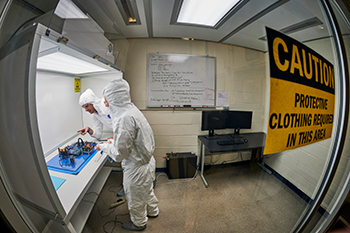
Photo by Earl Richardson
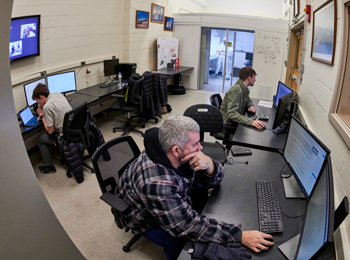
Photo by Earl Richardson
